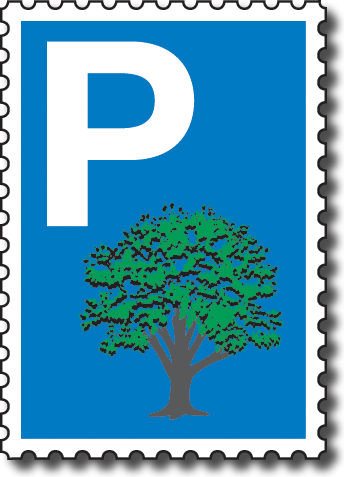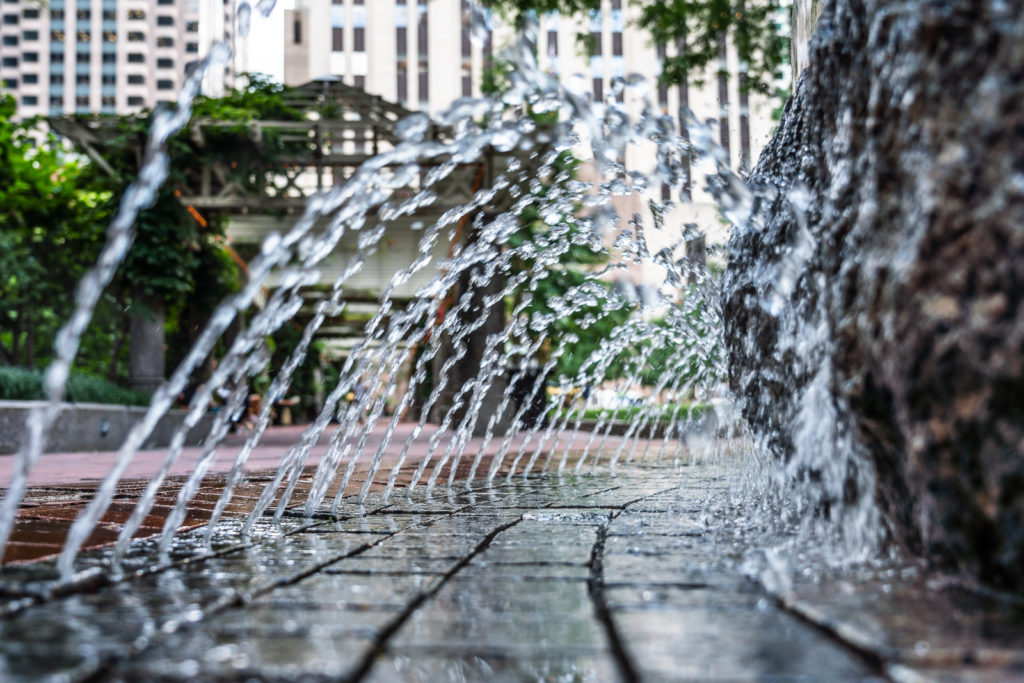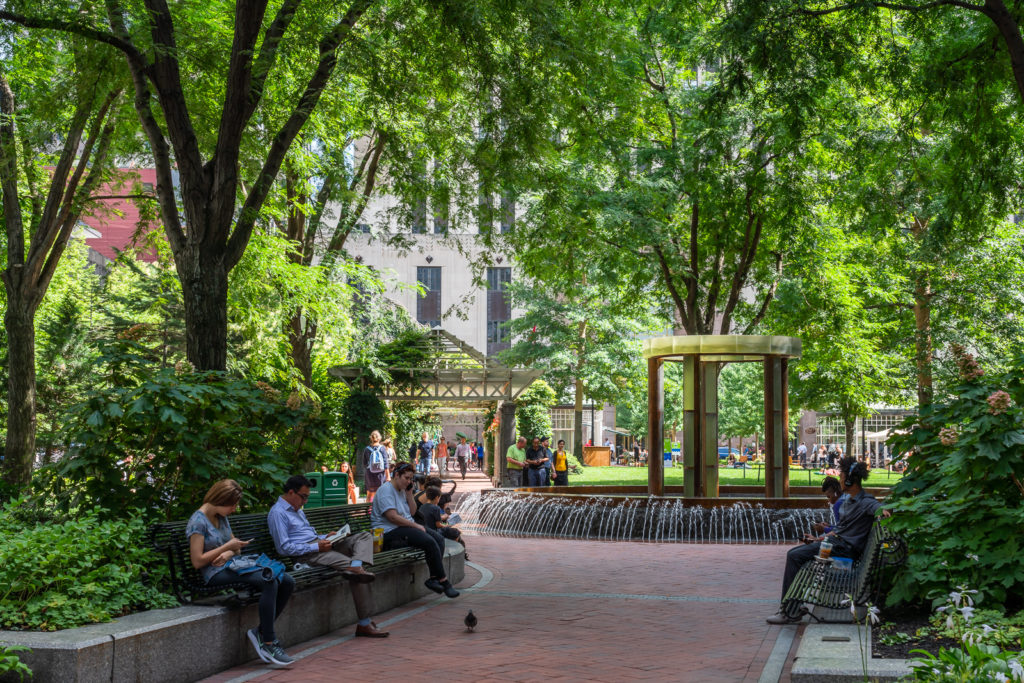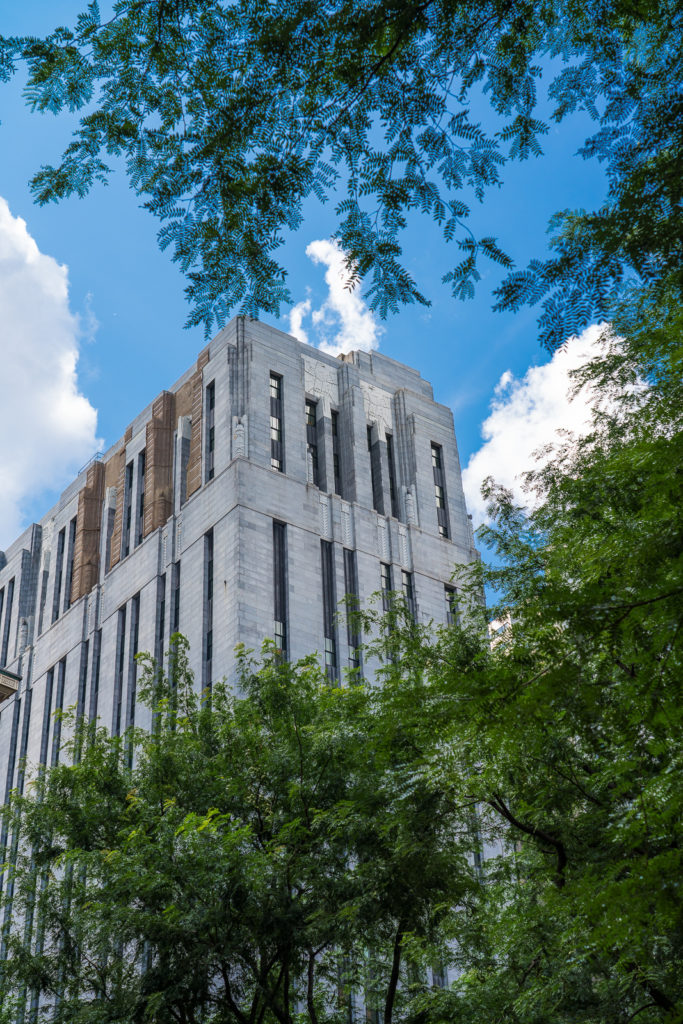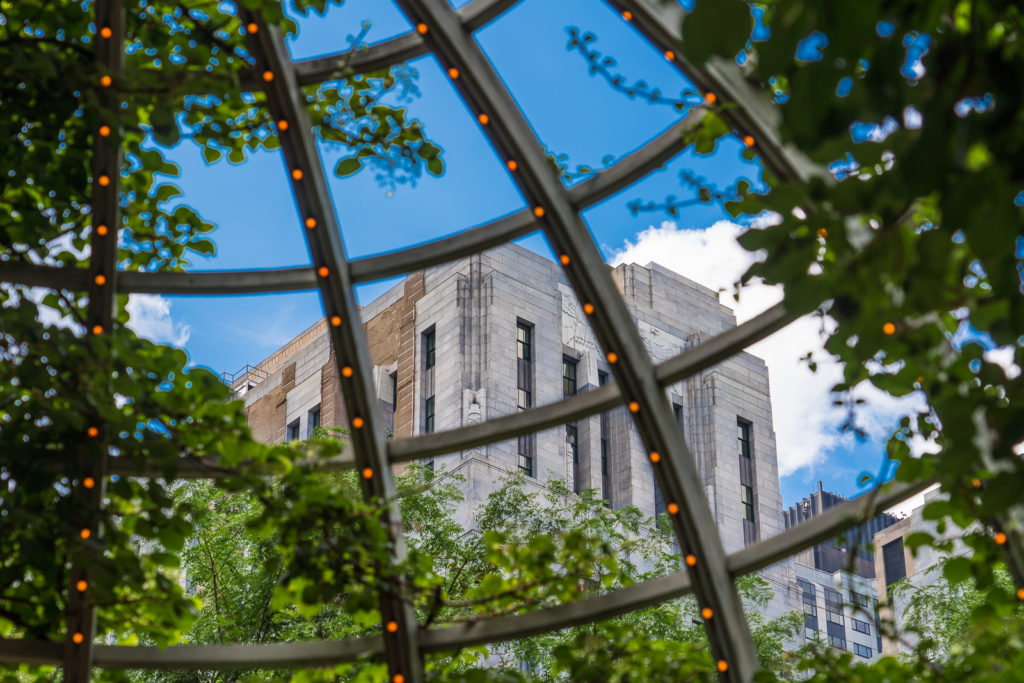Summer photos by Doug Shoop
Blog Archives
Recent Posts
Summer in the Park
When is Brown Burlap “Green”?
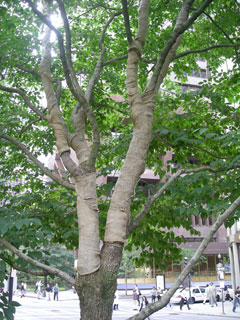
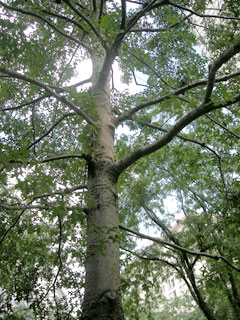
Have you noticed the brown burlap wrapped around the upper trunks and branches of the rubber trees and pin oaks in our Park? The burlap may look like giant ace bandages, but our trees are not injured. In fact, the burlap is there to prevent injury.
Several years ago, our arborists at Hartney-Greymont noticed the telltale pattern of holes on the softer bark of our rubber trees, indicating sapsuckers had discovered our Park. Sapsuckers are in the woodpecker family, and have strong preferences for certain trees, rubber trees and pin oaks being some, using their beaks to make rows of holes in the soft bark to extract the trees’ sap. Not only is the scarring unsightly, the damage can cause limb loss or tree death.
Rather than using toxic sprays to protect our trees, our arborists employ a simple, environmentally-friendly way to discourage the sapsuckers. Each spring, a barrier of brown burlap is wrapped around the part of the trees that would be targeted by the birds. The burlap is removed each fall, after the birds have migrated south, and our trees have remained unscathed. This simple solution is part of our on-going commitment to find new ways to preserve and improve our Park without harmful chemicals.
Barred Owl – December 2, 2009
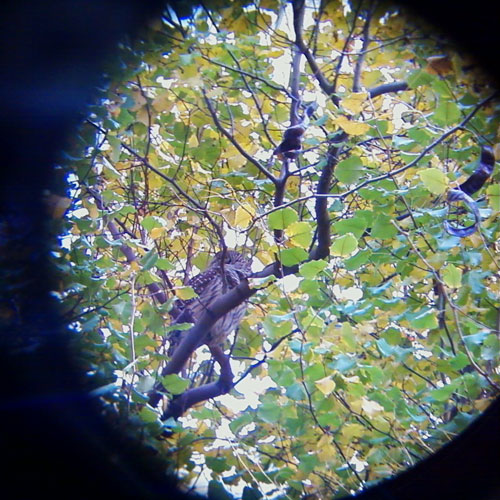
Barred Owl in Norman B. Leventhal Park on December 2, 2009, photographed by Matt Garvey. We wonder if this is the same barred owl whose sightings at Faneuil Hall and the Boston Common were chronicled in the Boston Globe in November.
April 28, 2009
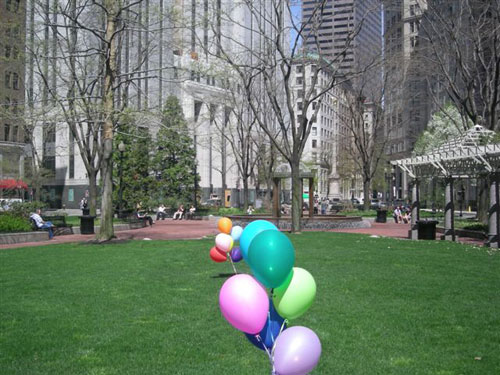
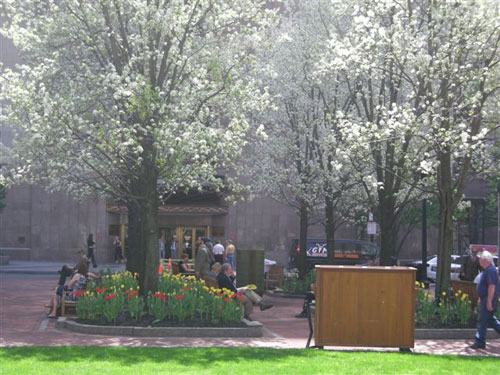
The Great Lawn is open for the season! Come to the Park and enjoy the spring flowers.
November, 2008
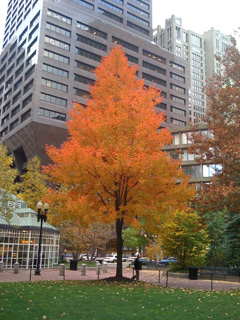
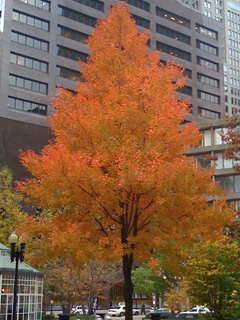
October Glory Maple

